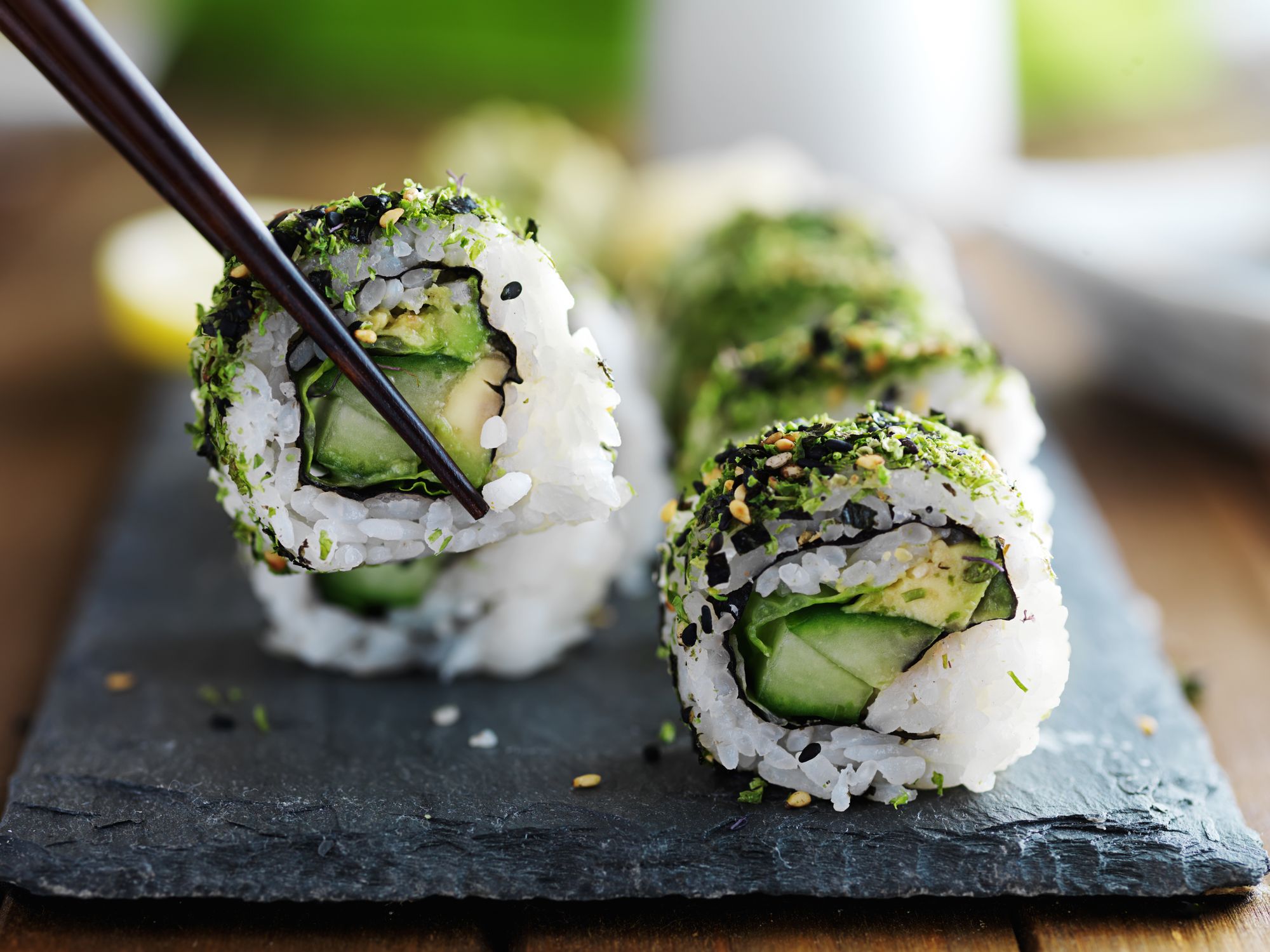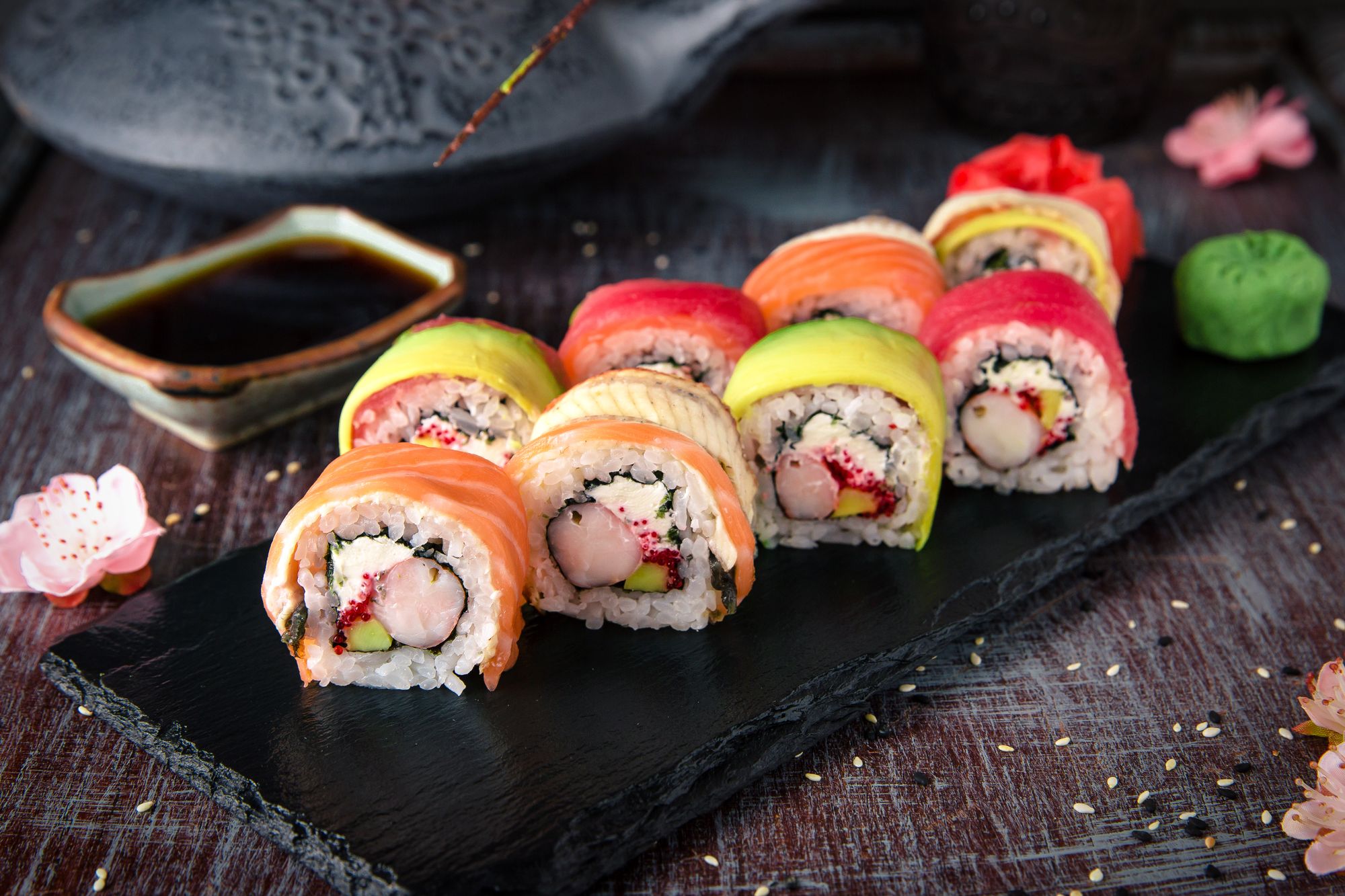Sushi is a delicious and visually appealing dish that is quick to prepare, made from simple and fresh ingredients, and loved by many. It has even become more accessible to those who do not eat raw fish or follow a plant-based diet, as most sushi restaurant menus offer alternatives. However, if you are trying to be more mindful of your diet, you may wonder whether sushi is actually healthy.
The answer is, it depends. Sushi rolls and sashimi typically include a combination of lean protein, seaweed, and rice, which offer various health benefits. However, some sushi orders can be high in sodium and saturated fats due to the ingredients and preparation techniques used. Additionally, the small portions can be deceiving and lead to overeating.
To make the most out of your sushi order, consider opting for rolls with more vegetables and less rice, choosing sashimi over rolls, or asking for less sauce. It is also recommended to limit the consumption of tempura or fried items and be mindful of portion sizes.
So, the next time you are at a sushi restaurant and wondering if you should indulge, remember that sushi can be a healthy option if you choose wisely and eat in moderation.
What Are the Advantages of Including Sushi in Your Diet?

Sushi is a dish that can offer various advantages to your body due to its nutrient-rich ingredients, including fish, seafood, vegetables, and rice. According to Trista Best, MPH, RD, LD, a registered dietitian at Balance One Supplements, sushi can provide essential vitamins, minerals, and fiber to your diet while being low in saturated fats, reducing the risk of certain chronic diseases such as heart disease and diabetes.
Here are four benefits of incorporating sushi into a healthy diet:
Achieve a Well-Balanced Diet with Sushi
Sushi is a dish made with protein-rich fish, healthy fats like avocado, and fibrous vegetables, making it a nutritionally well-balanced meal. According to Amy Goodson, MS, RD, CSSD, LD, author of The Sports Nutrition Playbook and a member of our Medical Expert Board, sushi can be a very healthful and nutritious food if prepared correctly.
Traditional sushi typically contains protein, carbohydrates, and healthy fats that work together to provide a feeling of fullness and satisfaction while stabilizing blood sugar levels. Fish is a high-quality protein source, and fatty fish such as salmon and tuna are rich in the omega-3 fatty acids that our brains and bodies need.
Moreover, sushi is typically wrapped in seaweed and stuffed with vegetables such as carrots, cucumbers, and avocado, which offer additional nutritional benefits. These vegetables provide essential vitamins, minerals, and fiber to the diet, making sushi a well-balanced meal option.
Overall, sushi can be a great choice for those seeking a nutritionally balanced meal. Just make sure to choose options that are not deep-fried and limit the amount of sauce used to keep the dish healthy.
Increase Your Weekly Fish Intake with Sushi
Sushi meals are typically composed of seafood, making it a fantastic way to achieve the recommended weekly intake of 8 ounces of seafood, according to Lauren Manaker, MS, RDN, author of The First Time Mom's Pregnancy Cookbook and Fueling Male Fertility. Seafood is rich in heart-healthy omega-3 fats that have been found to reduce the risk of heart disease, depression, dementia, and arthritis, while also improving overall mood.
Consuming 250-500mg of omega-3 fats per day is recommended, and some commonly served sushi items such as salmon, mackerel, crab, and tuna are a great source of these essential nutrients. By enjoying sushi, you can easily increase your weekly fish intake and reap the numerous health benefits that come with it.
Sushi Fish: A Rich Source of Health-Supporting Micronutrients
Sushi fish, especially fatty fish like salmon and tuna, are packed with numerous health-supporting micronutrients. According to Amy Goodson, MS, RD, CSSD, LD, a member of our Medical Expert Board, the omega-3 fatty acids found in fatty fish can support brain health, cell development, and may even reduce the risk of chronic disease and some cancers.
Yellowfin tuna, a common ingredient in sushi, is also an excellent source of selenium, an essential mineral and antioxidant that plays a vital role in thyroid function and metabolism. In addition to being an excellent source of protein and omega-3 fatty acids, fatty fish like salmon and tuna are also one of the few food sources of vitamin D.
Therefore, by consuming sushi fish, you can easily obtain these micronutrients that provide numerous health benefits, making sushi a nutrient-dense option for those seeking to support their overall well-being.
Moderate Sushi Consumption Can Aid Your Weight Loss Journey
Sushi is a great option for those trying to manage their weight as it is generally low in calories and high in protein and fiber, according to Trista Best, MPH, RD, LD, a registered dietitian at Balance One Supplements. Sushi rolls that contain vegetables like avocado, cucumber, and seaweed are rich in antioxidants that can protect cells from damage.
By opting for sushi with more vegetables and less rice, choosing sashimi over rolls, or requesting less sauce, you can ensure that you are consuming a healthy meal. Sushi can also aid in weight loss goals by providing a filling and satisfying meal option while being low in calories.
However, it is essential to consume sushi in moderation, as it is still possible to overeat, especially if you opt for fried or tempura items. Therefore, by incorporating sushi into a balanced diet and eating in moderation, you can enjoy its numerous health benefits while achieving your weight management goals.
Factors That Can Lead to an Unhealthy Sushi Order

The ingredients and preparation methods used in sushi can affect its healthiness, as noted by Trista Best, MPH, RD, LD, a registered dietitian at Balance One Supplements. Here are three factors that can contribute to an unhealthy sushi order:
- High-Calorie Ingredients: Sushi rolls made with high-calorie ingredients, such as fried tempura batter, cream cheese, or mayonnaise-based sauces, can be unhealthy due to their high calorie and unhealthy fat content.
- High-Sodium Ingredients: Pickled vegetables and soy sauce served on the side can contain high levels of sodium, making them a less healthy option for those concerned about high blood pressure.
- Mercury Levels in Certain Fish: Although fish provides several health benefits, eating some species may increase exposure to mercury. Certain people, such as pregnant women and young children, should be mindful of their mercury intake. Tuna, for example, can contain high levels of mercury, which can be harmful in large quantities.
By being mindful of these factors, you can make healthier choices when ordering sushi, such as opting for rolls with more vegetables and less rice, choosing sashimi over rolls, and limiting the consumption of fried or tempura items.
An RD Assessment of 5 Popular Sushi & Sashimi Orders: Are They Healthy?

1) California Roll
This roll can be a healthy option as it includes nutrient-rich ingredients such as avocado, which is a good source of healthy fats, fiber, and vitamins, and cucumber, which is low in calories and high in water content. The crabmeat used in California rolls is also a good source of protein and minerals," says Best. According to Goodson, California rolls can provide a balance of carbs, protein, and fats.
2) Salmon Skin Roll
The Salmon Skin Roll is a nutrient-dense sushi option, as pointed out by Amy Goodson, MS, RD, CSSD, LD, author of The Sports Nutrition Playbook. The roll contains salmon skin, which has the highest concentration of omega-3 fatty acids in the fish, providing vitamins B and D, as well as minerals such as niacin and phosphorus.
Omega-3 fatty acids are crucial for maintaining brain health and reducing inflammation in the body. Vitamins B and D play vital roles in the body, including supporting energy production, immune function, and bone health, while minerals like niacin and phosphorus contribute to metabolic processes and bone health.
However, it's important to note that this roll should be consumed in moderation, as some salmon skin rolls can be high in sodium and calories, especially those that contain mayonnaise-based sauces or fried tempura batter. Opting for rolls with fresh, high-quality ingredients and minimal added sauces can make the Salmon Skin Roll a healthy and delicious option.
3) Salmon & Avocado Roll
Salmon and avocado make for a powerful combination in sushi rolls, as noted by Amy Goodson, MS, RD, CSSD, LD, author of The Sports Nutrition Playbook. "This roll is truly a healthy fat powerhouse between the salmon and the avocado," she says.
Salmon is a rich source of omega-3 fatty acids, which can reduce inflammation and improve heart health. It is also a good source of protein, vitamin D, and several other vitamins and minerals. Avocado is an excellent source of healthy fats, including monounsaturated and polyunsaturated fats, which can improve heart health and lower bad cholesterol levels. It also provides fiber, vitamins, and minerals.
To make this order even healthier, Trista Best, MPH, RD, LD, a registered dietitian at Balance One Supplements, suggests choosing brown rice instead of white rice for more fiber, vitamins, and minerals. Asking for less rice in the roll can also reduce the overall calorie content and increase the proportion of salmon and avocado, both of which are nutrient-rich ingredients.
By making these simple choices, you can enjoy a delicious and nutrient-dense sushi roll that supports heart health, reduces inflammation, and provides several essential vitamins and minerals.
4) Rainbow Roll
A multi-fish sushi roll can be a protein and fiber-packed option, as pointed out by Amy Goodson, MS, RD, CSSD, LD, author of The Sports Nutrition Playbook. "This roll features multiple types of fish and packs a whooping 21 grams of protein and 6 grams of fiber," she explains.
The inclusion of fatty fish and avocado in this roll provides plenty of healthy fats, which are essential for maintaining heart health, reducing inflammation, and supporting brain function. However, for those looking to lose weight, Goodson suggests consuming this roll in moderation.
Choosing rolls with fresh, high-quality ingredients and minimal added sauces can make a multi-fish sushi roll a healthy and delicious option. It's also crucial to keep portion sizes in mind and consume rolls in moderation as part of a balanced diet.
5) Crunchy Spicy Tuna Roll
The Spicy Tuna Roll is a popular sushi roll featuring spicy tuna served on top of crispy sesame rice and drizzled with black pepper soy sauce. However, as noted by Amy Goodson, MS, RD, CSSD, LD, author of The Sports Nutrition Playbook, the fried sesame rice and soy sauce add additional saturated fats and sodium.
According to Trista Best, MPH, RD, LD, a registered dietitian at Balance One Supplements, the Spicy Tuna Roll is not the healthiest option due to its high calorie, unhealthy fat, and sodium content. The spicy tuna filling typically includes mayonnaise, which is high in calories and unhealthy fats. Additionally, the roll's "crunchy" aspect often comes from tempura batter, which is deep-fried and high in calories and unhealthy fats.
To make this order healthier, Goodson suggests opting for the black pepper soy sauce on the side and using it sparingly to reduce sodium intake. Best recommends requesting the sushi chef use less spicy mayonnaise or a low-fat, low-calorie mayonnaise-based sauce. You can also ask for the roll to be made without the tempura coating, reducing calorie and fat content.
Adding extra vegetables such as cucumber, avocado, or carrots can increase the fiber content and add extra vitamins and minerals. By making these simple adjustments, you can enjoy a delicious and healthier version of the Spicy Tuna Roll.

